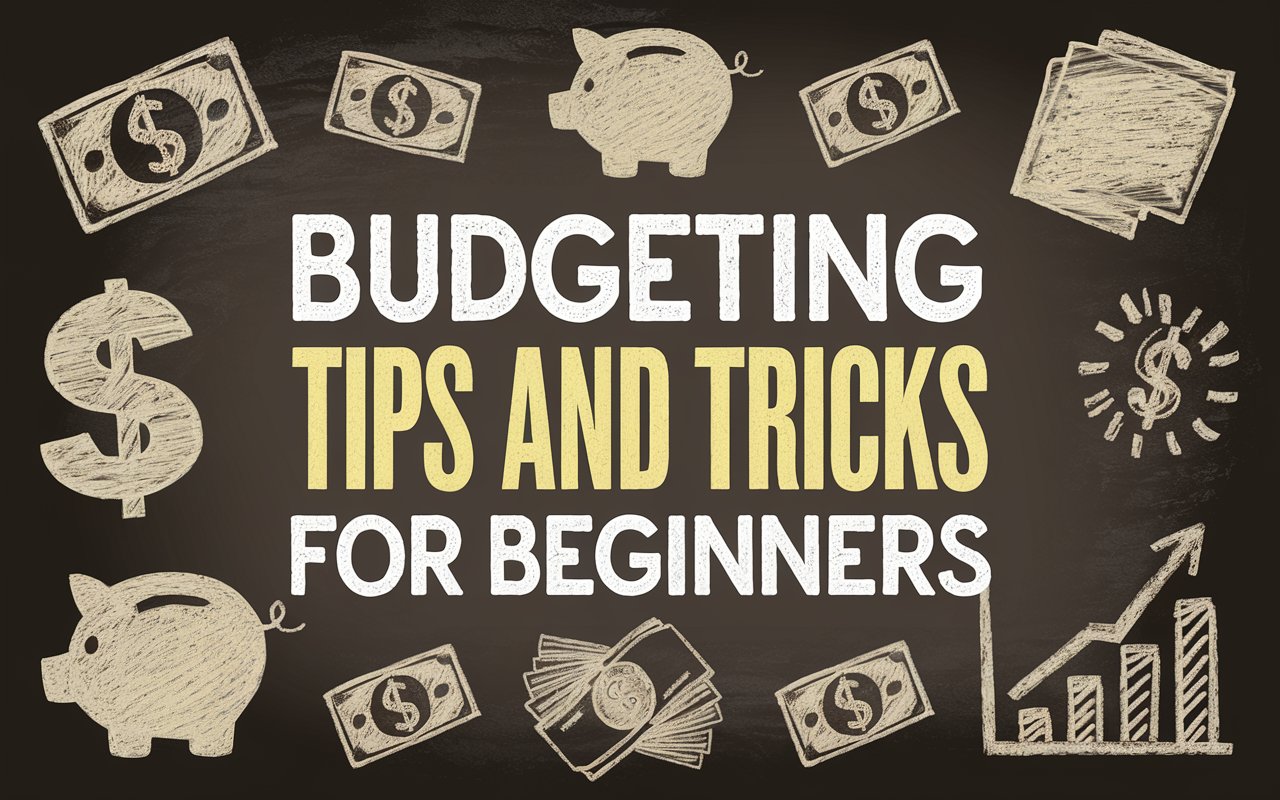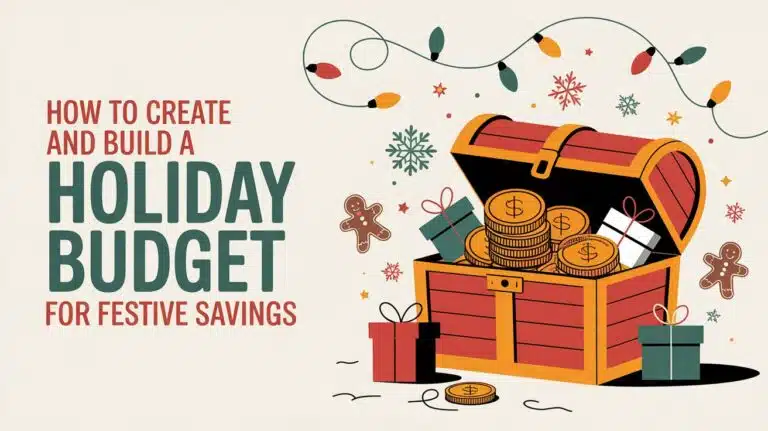Managing money effectively isn’t something most of us learn in school, and it can feel overwhelming when you’re starting out.
But here’s the good news – budgeting isn’t as complicated as it seems.
With a few simple strategies, even a beginner can get a solid grip on personal finances.
Whether you want to save for a goal, reduce debt, or just stop wondering where your money went, this guide is for you.
In this post, I’ll walk you through practical budgeting tips for beginners, breaking everything down step-by-step so it’s easy to follow. Let’s jump in!
1. Track Your Spending
The first step to starting a budget is to understand exactly where your money goes. Most people underestimate their daily spending.
A coffee here, an online subscription there – it adds up quickly. Tracking your expenses gives you a clear picture of your spending habits and reveals patterns you might not have noticed.
Here’s what I suggest:
- Write down every expense: You can use a notebook, spreadsheet, or app to record each transaction.
- Categorize your expenses: Split them into categories such as groceries, utilities, dining out, transportation, and entertainment.
- Track spending over 30 days to spot any unnecessary spending habits.
Using apps like Mint or YNAB (You Need a Budget) can make tracking more manageable. They sync with your bank account, automating the tracking process.
When you know where your money is going, you’re in a better position to make informed choices.

2. Set Clear Financial Goals
Setting clear financial goals is vital for effective budgeting. Without specific goals, you may feel lost or unmotivated.
Goals give you direction and help you track your progress. Start by identifying both short-term and long-term goals.
Short-term goals might include saving $500 for emergencies, while long-term goals could involve saving for a house or retirement.
Breaking big goals down into smaller steps makes them easier to achieve. For instance, if you want to save $12,000 for a car in two years, plan to save $500 each month.
Use the SMART criteria for your goals: make them Specific, Measurable, Achievable, Relevant, and Time-bound.
Instead of saying, “I want to save money,” say, “I will save $1,000 in six months.” This clarity helps you stay focused and motivated.
Align your goals with your personal values. Consider what matters most to you—financial security, travel, or family—and create goals that reflect these priorities.
Finally, write down your goals and review them regularly. Keeping them visible can remind you of your objectives.
Celebrate small wins along the way to maintain motivation and build momentum toward achieving your financial dreams.
3. Create a Budget Plan
Creating a budget plan means assigning a limit for each spending category.
A strong budget gives every dollar a purpose. Below are different budgeting methods for beginners.
Zero-Based Budgeting
Zero-based budgeting is when your income minus your expenses equals zero. Every dollar is assigned to an expense, debt, or savings.
Zero-Based Budgeting vs. Traditional Budgeting
| Budget Type | Description | Suitable For |
| Zero-Based Budgeting | Assigns every dollar to a purpose | Anyone wanting detailed control |
| Traditional Budgeting | Lists monthly expenses, saves what’s left over | Those with flexible spending habits |
The 50/30/20 Rule
The 50/30/20 Rule is a simple plan that divides your income. Fifty percent goes to needs, 30% to wants, and 20% to savings.
- Needs (50%): Include rent, groceries, and utilities.
- Wants (30%): Cover entertainment and eating out.
- Savings (20%): Focuses on building a savings fund.
This rule works well for beginners because of its flexibility and simplicity.
Envelope Budgeting System
The envelope system helps manage cash spending. You set a budget, put cash in labeled envelopes for each category, and spend only from these envelopes.
4. Prioritize Needs Over Wants
Distinguishing between needs and wants is essential for staying within your budget.
Needs are essential expenses, such as housing, food, transportation, and healthcare.
Wants are non-essentials, like dining out, vacations, or streaming services.
When budgeting, cover all your needs first. This ensures your essential expenses are taken care of before you allocate money for discretionary spending.
For example, paying rent should come before buying new clothes or dining at a fancy restaurant.
A practical way to prioritize is by making a list of all expenses and marking them as “needs” or “wants.”
If your budget is tight, focus solely on needs and cut back on wants temporarily. Adjust your priorities as your financial situation improves.
Remember, it’s okay to treat yourself occasionally, but the key is balance.
Set limits for how much you spend on wants each month, so you don’t derail your financial goals.
5. Use Budgeting Tools and Apps
Budgeting tools and apps simplify the process of managing your finances.
They help you track expenses, set goals, and even send reminders for bill payments. Popular budgeting apps include:
- Mint: Tracks expenses and provides financial summaries.
- YNAB (You Need A Budget): Focuses on giving every dollar a job.
- PocketGuard: Helps control spending by showing what’s left after bills and savings.
Using these tools removes the hassle of manual calculations. Most apps allow you to link your bank accounts, making it easier to monitor transactions.
They also generate visual reports, like pie charts, that give you a clear overview of your spending.
If you prefer traditional methods, spreadsheets can also work well.
The goal is to choose a tool that matches your style, whether that’s digital or paper-based.
Consistency is key, so stick to the tool or app you find most comfortable.
6. Automate Your Savings
Automating savings ensures you stay on track without having to think about it.
You can set up automatic transfers from your checking account to savings each month.
This approach helps you avoid spending the money on other things.
Start by automating at least 10-20% of your income for savings.
Many banks and budgeting apps offer automation features, making the process seamless.
Even if it’s a small amount, regular savings build up over time.
Automating savings for emergency funds, retirement, or specific goals ensures you’re always moving towards your targets.
For example, you could create automatic deposits for both a general savings account and a vacation fund.
This strategy works well because you’re paying yourself first—saving before you spend.
Once the savings are automated, you won’t have to rely on willpower alone to set aside money.
7. Review and Adjust Your Budget Regularly
A budget isn’t a one-and-done deal; it needs regular review.
Your expenses and income might change over time, so your budget must reflect these shifts.
Schedule a monthly review to see if your spending aligns with your plan.
Use this opportunity to identify areas for improvement. Did you overspend on groceries?
Did unexpected expenses throw off your savings plan? Adjust as needed to stay on track.
Also, review your budget whenever there’s a major life change, such as a new job, move, or significant purchase.
An updated budget keeps you in control even when life shifts.
8. Cut Unnecessary Expenses
Cutting unnecessary expenses helps free up more money for savings or debt payments.
Start by reviewing subscription services—do you need multiple streaming platforms, or can you cancel some?
Switch to generic brands for groceries, as they often offer the same quality at lower prices.
Cooking at home instead of dining out also reduces spending.
Evaluate your utility bills and see if you can cut costs by using energy-efficient appliances.
By eliminating unnecessary expenses, you’ll have more room to allocate funds to things that truly matter.
The goal isn’t to deprive yourself but to spend with purpose.
9. Build an Emergency Fund
An emergency fund is crucial for financial security. It covers unexpected expenses like medical bills, car repairs, or sudden job loss.
Without one, you might need to rely on credit, which can lead to debt. Aim to save at least three to six months’ worth of living expenses.
Start small by saving what you can—every bit counts. Even setting aside $10 or $20 each week will help you build a fund over time.
Keep your emergency savings in an easily accessible account, like a high-yield savings account, so you can use it quickly when needed.
Automating a small portion of your income into this fund ensures steady progress. The key is to treat these savings as non-negotiable.
Avoid dipping into the fund unless it’s truly an emergency. With a solid emergency fund in place, you’ll have peace of mind and can avoid financial stress.
10. Avoid Debt
Debt can derail your financial progress, so it’s essential to avoid it whenever possible.
If you already have debt, focus on paying it off quickly using strategies like the debt snowball method.
This method focuses on paying off smaller debts first to gain motivation.
Credit cards are a common source of debt, so limit their use. If you can’t pay the full balance each month, avoid charging more.
Instead, switch to cash or debit to control spending. Reducing debt improves your financial freedom and allows more room for savings.
When considering loans, only borrow what’s necessary and shop for the best interest rates.
Paying off debt early saves you from accumulating high-interest charges, so aim to eliminate it as soon as possible.
11. Plan for Irregular Expenses
Irregular expenses are costs that don’t occur every month but still need to be part of your budget.
These can include car repairs, annual insurance premiums, holiday gifts, or property taxes.
Failing to plan for these expenses can throw off your budget when they come up unexpectedly.
To manage irregular expenses, start by listing them out and estimating the cost for each.
Divide the total by 12, and set aside that amount each month in a sinking fund.
For example, if you expect to spend $1,200 on car repairs for the year, save $100 each month.
This way, you’ll have the funds ready when the expense arises.
Setting up separate sinking funds for different categories can help you stay organized.
You might have one fund for car maintenance, another for holiday spending, and so on.
This prevents large, irregular expenses from becoming a financial burden.
Planning ahead for these costs ensures your budget remains balanced and prevents surprises from disrupting your savings goals.
It’s one more way to stay in control of your finances.
12. Use Cash for Discretionary Spending
Using cash for discretionary spending can help curb impulse buying.
When you use cash, you have a physical limit on how much you can spend, making it easier to stick to your budget.
It’s a simple but effective way to manage expenses that aren’t essential, such as dining out or shopping.
At the beginning of each month, withdraw cash for your discretionary spending categories, such as entertainment or hobbies.
Once the cash runs out, stop spending in that category.
This method is similar to the envelope system but doesn’t require physical envelopes if you prefer just carrying the cash.
Using cash can help you be more mindful of your spending habits.
It’s harder to part with cash than to swipe a card, so you might think twice before making a purchase.
Plus, you avoid accumulating credit card debt, which can lead to overspending.
This approach is especially useful for those who struggle with impulse purchases.
It provides a visual and tactile reminder of how much you’ve spent, helping you control your budget better.
13. Make Use of Discounts and Coupons
Taking advantage of discounts and coupons is a great way to save money on everyday purchases.
With a little planning, you can reduce your grocery bill, restaurant expenses, or even clothing costs without sacrificing quality.
Look for discounts in-store and online. Many retailers offer email subscriptions with exclusive discounts or sales notifications.
Sign up for loyalty programs at your favorite stores to get access to member-only deals.
Couponing apps like Honey or Rakuten automatically apply discounts at checkout, saving you time and effort.
Don’t forget about seasonal sales. Stocking up on items during major sales, like Black Friday or end-of-season clearances, can save you a lot of money in the long run.
However, be careful not to buy things just because they’re on sale. Only purchase items you were already planning to buy.
Using discounts and coupons is a simple way to stretch your budget further. It’s an easy habit to adopt and can add up to significant savings over time.
14. Get Everyone on Board
Budgeting works best when everyone in your household is on the same page.
Whether you’re budgeting as a couple, family, or even roommates, clear communication about financial goals and spending habits is key.
When everyone is on board, sticking to a budget becomes much easier.
Start by having an open conversation about your financial situation and goals.
Make sure everyone understands the importance of budgeting and is committed to sticking with the plan.
Set up regular budget meetings to review progress, make adjustments, and discuss any challenges.
It’s important to be flexible and patient with each other.
Not everyone has the same approach to money, so it might take time to find a system that works for everyone.
Create a shared calendar for bill payments or use a budgeting app that multiple users can access to stay organized.
When everyone is working together, managing your household finances becomes smoother.
You can tackle financial challenges as a team, which helps reduce stress and ensures that everyone is contributing to shared financial goals.
15. Educate Yourself Continuously
Budgeting is a skill that you can always improve.
Financial literacy is key to making informed decisions about your money, so it’s important to keep learning.
There are plenty of free resources, such as blogs, podcasts, and YouTube channels, that provide tips on budgeting, saving, and investing.
Set aside time each month to educate yourself on financial topics.
You might read books on personal finance, take online courses, or attend workshops.
Understanding how to manage your money will empower you to make better decisions.
Some recommended personal finance books include “The Total Money Makeover” by Dave Ramsey and “Your Money or Your Life” by Vicki Robin.
These books provide valuable insights on budgeting, debt management, and financial independence.
Staying informed helps you adapt to changes in your financial situation and ensures you’re using the best strategies for your goals.
The more you learn, the more confident you’ll feel in managing your money effectively.

FAQs About Budgeting Tips for Beginners
Key Takeaways
- Budgeting tips for beginners include tracking expenses and setting financial goals.
- Choose a budgeting plan that fits your lifestyle, such as the 50/30/20 rule.
- Prioritize savings, avoid debt, and plan for irregular expenses.
- Use apps and tools to simplify the process and automate savings.
Budgeting may seem tough at first, but it’s an essential skill for financial freedom.
Start small, track your expenses, and adjust your budget as needed.
With these budget tips for beginners, you’ll be well on your way to building a solid financial future.
Keep learning, stay consistent, and remember – budgeting is a journey, not a sprint!
Watch this video for more information:




